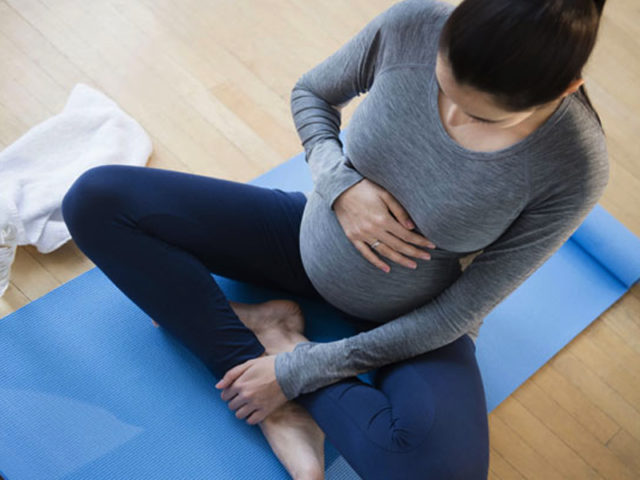Babies have gained notoriety for keeping mothers up at odd hours with late-night feedings — but pregnancy insomnia can begin long before your baby arrives.
Figuring out some way to improve rest during pregnancy isn’t only significant for your energy and mindset. Pregnant ladies who get less rest are bound to have complications, as per sleep disorder experts.
Discover what rest disruptors are normal all through your pregnancy, as well as ways to get better rest.
How To Sleep When Pregnant: Sleep By Trimester

The below section will answer your question on how to sleep when pregnant to prevent insomnia during pregnancy.
First Trimester:
How to sleep during pregnancy in the first trimester or how to sleep during early pregnancy? Ladies will quite often want a lot of rest as the placenta develops. Try not to be astounded in case you feel sleepier overall, need to hit the sack earlier and lay down for naps. At this stage, the best thing you can do is to give in to this urge and get the rest your body needs.
Second Trimester:
The measure of rest standardises to the sum you really wanted before your pregnancy. In any case, as the child and abdomen region develop, there might be things that begin to impact rest, for example, getting up and utilizing the bathroom.
Third Trimester:
Excessive sleeping during pregnancy can emerge out of low-quality rest. Ladies will generally have less quality rest because of variables, for example,
- Back torment
- Child kicks
- Leg cramps
- More successive pee inclinations
- Considerable weight gain
- Blockage related to late-term pregnancy
Dos & Don’ts Of Different Sleeping Positions: How To Sleep During Pregnancy & How Not To
Which side to sleep on during pregnancy? Let’s come to the left side vs. right side debate on how should a pregnant woman sleep. This section will help you understand how to sleep during pregnancy and how not to:
Left Side
The left side is considered to be the ideal while sleeping for pregnant women as sleeping on the right side during pregnancy or sleeping on the back during pregnancy. This is because the left side enables the maximum blood flow from the IVC or inferior vena cava. This vein is situated on the right side of your spine and is responsible for carrying blood to your heart and, hence, to your baby too. Not just that, sleeping on the left side also reduces the pressure exerted on the kidneys and the liver. This prevents swelling of hands, feet, and ankles.
Right side
Sleeping on the right side during pregnancy is considered to be ideal, whether it be sleeping on the right side during the third trimester, second trimester, or first trimester. But does that mean you cannot sleep on your left at all? It definitely doesn’t mean that. But the right side still remains the more preferred option. This is because there is a slender risk of compression problems with the IVC when you sleep on the right. However, what matters the most is your comfort.
8 Tips To Sleep Better During Pregnancy
1. Eat And Drink Strategically

During development, hormonal changes joined with an extending uterus make the whole stomach and digestive system delayed down. This can cause obstruction, acid reflux, and indigestion, which may turn out to be more terrible around evening time. Simultaneously, expanded kidney productivity and pressure on the bladder from the growing baby make urination more frequent. Dealing with the body’s stomach’s digestive input and output is crucial for a good night’s sleep during pregnancy.
2. Work On Your Sleep Hygiene

Rest hygiene is an assortment of habits and practices that advance quality rest. Rest hygiene is significant for everybody and can have a major effect during pregnancy.
Work on your sleeping habits with these strategies:
- Hit the sack and get up at the same time every day.
- Utilize your bed just for sleeping and sex.
- Try not to exercise within three hours of sleep time.
- Keep gadgets out of the room, and stay away from screens before bed.
- In the event that you can’t doze off within 30 minutes, get up and do a non-stimulating activity like reading.
3. Practice Healthy Breathing

Weight gain, alongside hormonal and physiological changes, incline pregnant ladies to sleep-disordered breathing (SDB). The most widely recognised signs of SDB during pregnancy incorporate wheezing and obstructive sleep apnea, a condition where the airway becomes repeatedly blocked during sleep.
4. Mitigate Your Legs

Pregnant ladies are bound to encounter leg cramping at night, due to changes in the body’s capacity to intake calcium. Restless legs syndrome, a condition portrayed by compelling impulses to move your legs, may happen all the more every now and again in pregnancy
Attempt these procedures to keep your legs from keeping you conscious around evening time:
- Perform delicate leg extends before bed.
- Get plenty of daytime workouts.
- Eat a calcium-rich diet.
- For abrupt spasms, flex your feet or press them against the foot of the bed.
5. Ease New Parent Worries

While pregnancy is often an exciting, special time, it can also be filled with stress. Pregnant moms may lie awake ruminating about childbirth, the baby’s health, finances, or a number of other things. They may also experience nightmares and vivid dreams, which are common in pregnancy.
To cope with nighttime worry, try incorporating calming practices into your schedule, like yoga, journaling, and breathing exercises. Consider taking a soothing bath or practising meditation to wind down in the evenings. You might sign up for a new-parent class to help prepare for the changes ahead.
6. Keep Away From Sleep Aids

While it’s enticing to go after a drug or natural enhancement to battle restlessness, these items are typically not suggested for pregnant ladies. Medicines are accompanied by side effects, and they have limited research in pregnant populations. In fact, even over-the-counter drugs ought not to be utilised without talking with a specialist. Their adequacy is questionable.
7. Stack Those Cushions

Following 20 weeks, specialists suggest you rest on your left side just to take into account the best bloodstream for the fetus and your uterus and kidneys. That means getting comfortable is the hardest thing about going to bed in the second half of your pregnancy.
Have a go at utilizing pillows to help you, one under your knee and one more under your tummy, or invest in a special (extra long) pregnancy body pillow. You can likewise construct a little well with a few normal pillows, roll onto your side, and toss a leg on one of them.
8. Rest During The Day

On the off chance that you’re not getting sufficient rest around evening time, napping is the best way to assist with lack of sleep. Take a stab at catching 20-to 30-minute catnaps at the end of the week and assuming you return home from work on the early side — however, don’t rest for significantly more than this. Extended rests can really cause you to feel more drained than you were before you began.
FAQs

Q. How important is seeking professional help regarding sleeping positions during pregnancy?
A. Try not to hesitate to seek professional guidance for any adjustment of sleep habits, regardless of how little they may be. While resting inconveniences can regularly be managed at home, a medical expert is needed to guide care or assess something serious. Staying healthy is especially important during pregnancy, and good health starts with a good night’s sleep.
Key Takeaways
- There are different things you should keep in mind in terms of your sleeping position during the three trimesters of pregnancy
- Follow the dos and don’ts of sleeping positions to avoid insomnia
- Remember the tips to sleep better during this time


